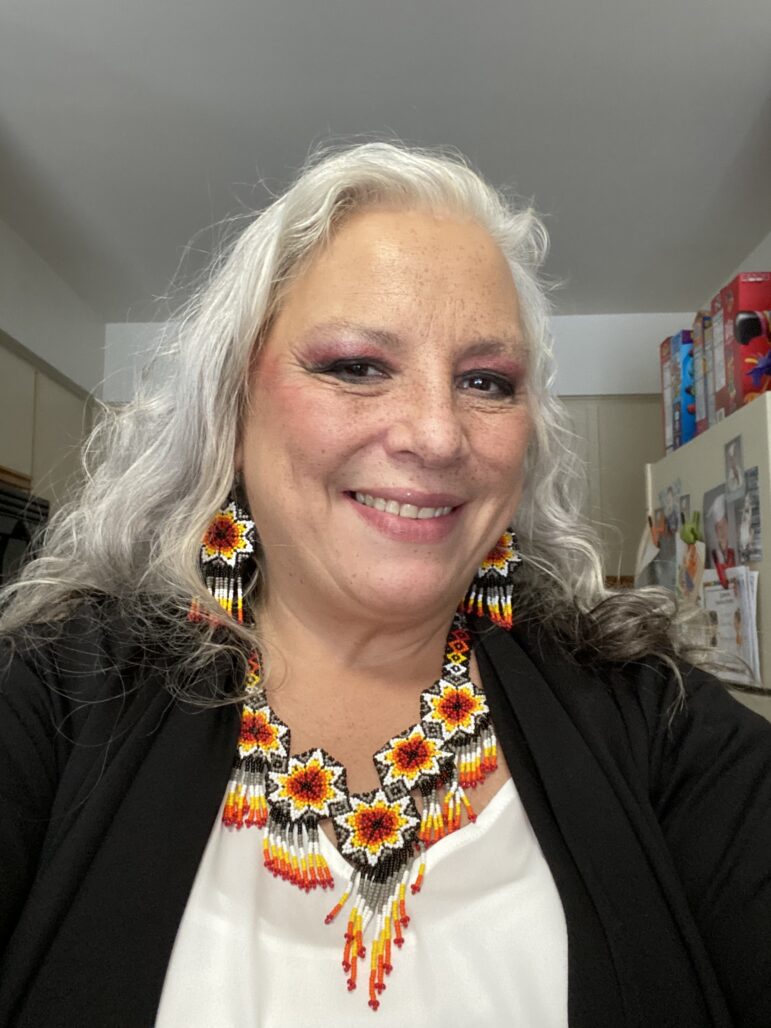COVID-19 is killing 1 in every 390 Native Americans — the highest mortality rate among any U.S. minority group, according to the American Public Media Research Lab.
But tribal leaders say Southwest Michigan’s Nottawaseppi Huron Band of the Potawatomi so far has avoided issues to that scale.
The tribe of 1,500 registered members, whose Pine Creek Indian Reservation is a 20-minute drive south of Battle Creek near Athens, kept its infection positivity rate below 5% until late last year, according to data from the tribe’s health and human services department.
CEO Barry Skutt said the tribal leaders created the measures and policies to protect employees and that were effective in curbing the spread of the virus. Most employees now work from home, and they are permitted extended time off for quarantining if needed.
“One policy allowed those with COVID or an exposure to COVID the ability to be paid 80 hours while quarantining,” Skutt said. “The other policy created a leave act that would allow a longer stay should the illness be more severe.”
Leaders say the tribe didn’t have any cases of COVID-19 traced to the workplaces such as the tribal health care centers or its Firekeepers Casino and Hotel in nearby Emmett Township. Members did experience infection rates from other sources, however.
“It was in the fall time we started to see the increase,” said Rosalind Johnston, the health and human services director of the tribe. “I remember looking at our testing rates and we were at 17%, 18% positivity, so we were higher even than the state, or nationwide.”
At least 5,477 known Indigenous Americans have died from COVID-19 through March 2, according to American Public Media Research Lab, which is affiliated with the Minnesota-based nonprofit, American Public Media. However, the research lab says this is a known under-count as numerous states don’t report deaths of Indigenous people separately.
When death rates started rising overseas at the start of the pandemic, Johnston said she immediately thought about the most vulnerable members of the tribe.
“When I first started to watch what was happening across the big waters, as I call it, and seeing the increase in COVID and knowing that was coming here, I had a lot of fear,” Johnston said. “I remember that feeling right in the pit of my stomach and knowing that the people who were most vulnerable were the elders in our community and I just felt fear for them.”
Randi McKinney, a tribal elder, has worried about her own health during the pandemic, but also about all elders because of their role in preserving and passing down the tribe’s culture to younger generations.
“Once they pass away, there’s all of this information that no one’s going to know,” McKinney said. “Unless (young people) sat down and talked with someone, they probably would have no idea how hard things used to be on Indigenous people. Schools, they certainly don’t teach the truth.”

Photo courtesy of Randi McKinney
Randi McKinney, a tribal elder of the Nottawaseppi Huron Band of the Potawatomi, wears traditional Native American jewelry at her home. McKinney said she worries about the impact of COVID-19 on tribal elders because of their role in preserving the tribe’s culture.When vaccine doses became available to the tribe in December, the tribal council voted that elders would be the first priority to vaccinate, and those wanting to be vaccinated would be able to do so even before health care workers.
“I got my second one, and so far, it makes me feel better when I am around my grandbabies and my kids, that I’m just about as safe as I can possibly be,” McKinney said.
While the vaccine is becoming more widely available, tribal members are still impacted by ongoing health guidelines, such as social distancing. Skutt, the tribe CEO, said he believes the inability to gather — a significant part of Native American culture — may be causing an increase in the number of members seeking mental health services. Other tribal leaders agree.
“We are seeing a lot more substance use, a lot more complexity in the cases that are coming forward, and just the crisis that is coming through is pretty high right now,” Johnston, the health director, said.
So far, the tribe has been able to administer more than 1,000 vaccine doses received from Indian Health Services, an agency within the U.S. Department of Health and Human Services. Leaders hope vaccinations will allow traditional gatherings to resume and instill a sense of normalcy among the community.
“I don’t know what that impact is going to be for (the tribe) long term, the only thing I can think of is that we have been incredibly blessed that our death has been incredibly low,” Johnston said.
“We still have those knowledge keepers and those traditional helpers and we still have people who can help us move forward in a healing way.”